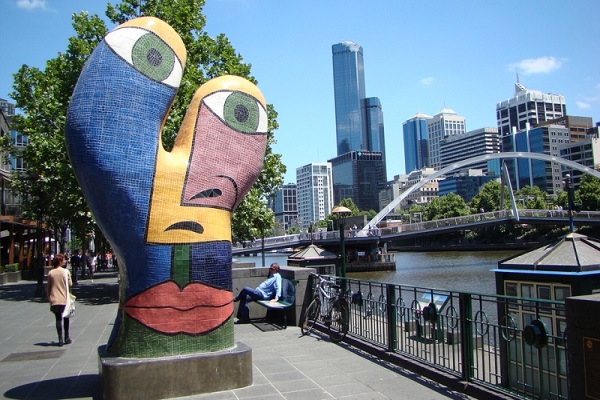History
The history of Southgate
Southgate was opened in 1992. This precinct perfectly reflects Australia food, wine and art with the unique Melbourne flavour. Southgate has always been a meeting point by the River Yarra as the freshwater coming downstream was protected by the Princes Bridges waterfall. Trading ships navigated upstream from Port Phillip Bay and to a large extent, this influenced the decision to choose that siting of the city of Melbourne in that location.
In the beginning, the south side of the river was where the food processing and breweries of the city were located while trading and shipping used the warehouses and docks. As time went on, the area transformed into an industrial district, housing old buildings and vacant land belonging to the government. In the 1940s, the leisure activities in these areas were limited to the Trocadero dance hall (where the art gallery is now located) and the Glaciarium ice skating rink (where Southgate commercial twin towers are now located). The only landmark in the area then was the Allens Confectionery factory big neon sign.
This would soon change in the 1960s and 70s with the relocation of the National Gallery of Victoria and Victorian College of the Arts respectively. These two relocations, coupled with the vision of a developed waterfront led to the evolution of the area into an educational, leisure, and cultural precinct. The government adopted a coordinated strategy in the 1980s that led to the construction and landscaping of the south promenade. This promoted the commercial infrastructure developments in the area, and it was around this time that Southgate was born.

For over 20 years now, Southgate has been an integral part of Melbourne life, especially for the increasing population of local residents. The planning of the area has been strategic to promote exploration and discovery with a sophisticated and deliberate approach reflecting how a city grows organically over time.
Southgate boundaries are well integrated into the surroundings which means you naturally find your way to the Arts Centre, Hamer Hall, National Gallery of Victoria, St Johns Church, Southgate office towers, riverside, Langham Hotel, across the road to the ABC headquarters, Australian Ballet, or beneath the Princes Bridge to Botanical gardens and Alexandra and Melbourne sport precincts.
With its commitment to Melbourne’s reputation as the cultural capital of Australia, Southgate displays several artworks covering various issues. Some of these artworks were commissioned in 1992 to commemorate Southgate’s opening, and each artwork focuses on how the artist interprets Melbourne. One of such artworks is a large mosaic sculpture titled Ophelia and made by Deborah Halpern. The sculpture was recently returned to Southgate after restoration.
Although ARA Australia currently owns it, it was originally built by Jennings Group Limited and AGC and has since passed through six other owners’ hands before getting to the current one.
